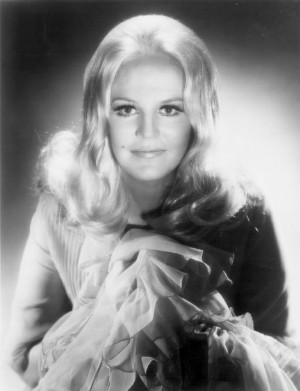In Celebration of the Human Voice - The Essential Musical Instrument
Home | Doo Wop | Barbershop | World | Contemporary | Christian | Vocal Jazz | Choral | Christmas | Instructional | Arrangements
Classical | Opera | Musicals | Personality | Young Singers | Disney | Videos | Songs | The Artists

Peggy Lee Biography

Click Here for Sheet Music and Songbook Vocal Arrangements
As a blues-influenced jazz singer, Lee's restrained yet soulful subdued singing style has been compared to Billie Holiday. Her long singing career virtually encompassed the history of American popular music between 1940 and 1970. In addition, she acted in films and revealed herself to be an accomplished songwriter. Born on a farm, Lee sang with the Four of Us in small clubs in the Midwest and California before being discovered by Benny Goodman in Chicago in 1941 and joining his band as replacement for Helen Forrest. Her first recordings with Goodman, including Irving Berlin's "How Deep Is the Ocean" (Columbia, 1941), were merely competent, but her 1942 recording of "Why Don't You Do Right?" revealed an individual style. Written by Lee herself (sic), it was based on a blues song by Lil Green. In 1943, after her marriage to Goodman's guitarist David Barbour, she left the band and retired to raise a family, only occasionally recording (sic). Among her first solo hits were "Manana" (Capitol, 1948), written with Barbour; "Bali Ha'i" (Capitol, 1949) and "Lover" (Decca, 1952), her spectacular mambo version of Lorenz Hart's and Richard Rodgers' waltz with an orchestra backing supplied by Gordon Jenkins. In the early fifties, Lee formed a songwriting partnership with the Hollywood composer Victor Young, which produced "Where Can I Go Without You?," among other songs. In 1955, she demonstrated her versatility when she was nominated for an Oscar for her performance as the fading singer in "Pete Kelly's Blues" and lent her voice to Walt Disney for his first (sic) full-length animated cartoon, "Lady and the Tramp," in which she sang her own compositions "He's a Tramp" and "The Siamese Cat Song." On record, her material ranged from show tunes like "Mr. Wonderful" and "Joey, Joey, Joey" (Decca, 1956) to big band blues such as "Alright, Okay, You Win" (Capitol, 1959), based on Joe Williams and Count Basie's interpretation. She also sang rhythm and blues including a fine version of Little Willie John's "Fever" (Capitol, 1958) and Ray Charles's "Hallelujah, I Love Him So" (Capitol, 1959), and recorded immaculate collections of popular ballads, such as "The Man I Love" (Capitol, 1957), which included her celebrated rendition of Jerome Kern's "The Folks Who Live on the Hill" and her album with George Shearing, "Beauty and the Beat" (Capitol, 1959). Lee's openness to so many forms of music - she even recorded an album of folk songs, "Sea Shells" (Decca, 1956) - led her to become one of the first mainstream performers to record material by The Beatles and other contemporary songwriters. In 1969 she returned to the Top Twenty with her highly formal version of Leiber and Stoller's "Is That All There Is?," arranged by Randy Newman. It was taken from an album of the duo's songs, "Mirrors" (A&M) (sic). Throughout the seventies and eighties she toured intermittently. |
Select a Category |
Want to Sing? - Find a Chorus Near You
List of Choruses by State | List of Choruses by City
